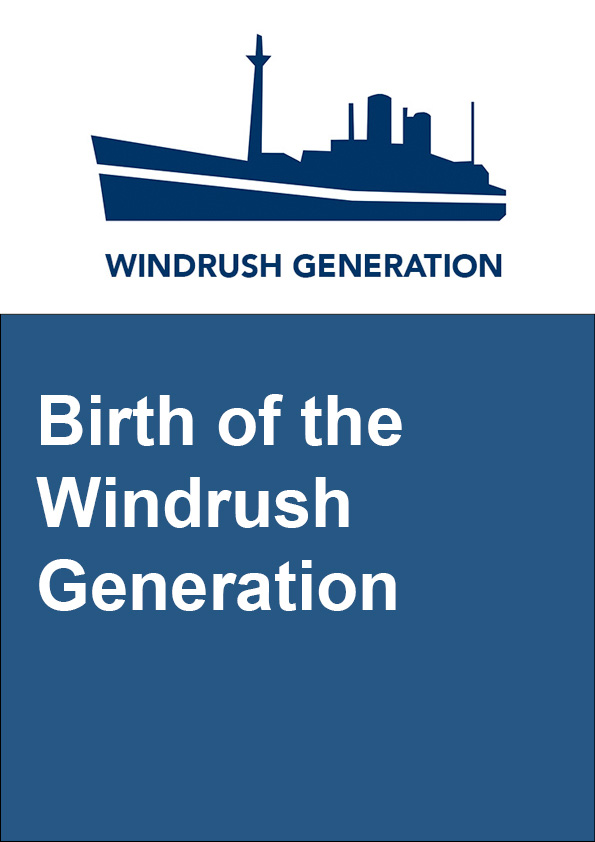Birth of the Windrush Generation
In 1995, Sam King and Arthur Torrington created a community organisation aimed mainly at young men and women (school children, in particular) of West Indian heritage. They focused on identity, belonging and sense of purpose and were determined to produce educational material that showed the connection with West Indian history and heritage. For centuries before 1948, there had been a Black presence in Britain.
Sam and Arthur formed Windrush Foundation in 1995 and in 1996 it became a registered charity. The co-founders’ main objective was to highlight the significance of the Empire Windrush’s journey, the personal stories and heritage of the passengers who travelled on the ship, and of the people in the West indies.
Before landing at Tilbury Docks, Essex, on June 22, 1948, Sam, who had served in the Royal Air Force during WWII, collated dozens of his fellow passengers’ names, and UK addresses. Hundreds of other RAF servicemen/ex-servicemen were also on the ship and it was apparent that he had exerted a degree of leadership among them during the journey. Sam sent his Windrush friends Christmas cards every year and kept in touch with them. His book, Climbing Up the Rough Side of the Mountain (1998), outlines his second journey from Jamaica, and his intention to settle permanently in the UK. He first brought his Windrush friends together in 1968 for the 20th anniversary of their arrival.. In 1998 at Lambeth Town Hall, they commemorated the 40th anniversary on June 22, an event hosted by the Mayor of Lambeth. Sam and hundreds of his friends had served King and Country in WWII, whether on the frontline or the home front. They knew how life was, both in the West Indies and in the UK.
More than five thousand West Indians service personnel had remained in Britain after 8 May 1945, and hundreds more arrived here on troopships after. The Ormonde and Almanzora were only two of many ships that brought West Indian settlers to the UK before 1948. Members of Sam’s generation were the pioneers who laid the foundation for those who arrived after June 22, 1948. Empire Windrush was the ship that caught the attention of British politicians and the news media in May and June of 1948 as it returned to Britain from the West Indies. Sam was aware of the political atmosphere at the time and informed Arthur in the early 1990s about the ship’s importance to West Indian history and heritage.
Sam was first to have coined the term ‘Windrush generation’ in describing himself and his colleagues, whether those who remained in the UK just after WWII or who returned on the Ormonde, Almanzora, or Empire Windrush. The 1950s saw tens of thousands of West Indian settlers arriving in the UK. It was a decade of activism as individuals like Claudia Jones, David Pitt, Sam King, Jocelyn Barrow, Amy Garvey (ex-wife of Marcus Garvey), et al, lobbied Parliament for laws against racial (or colour) discrimination. They were successful to an extent. The Race Relations Act 1965 was the first legislation in the United Kingdom to address the situation. The Act outlawed discrimination on the “grounds of colour, race, or ethnic or national origins” in public places in Great Britain. It also prompted the creation of the Race Relations Board in 1966. The generation of pioneers and others formed themselves into a pressure group called the Campaign Against Race Discrimination (CARD) that lobbied for further government action, until the Race Relations Act 1976 was passed. Sam King was a founder member of CARD. The organisation was set up after Martin Luther King Jr met with Claudia Jones and several activists, including Sam King who was a committee member of the West Indian Gazette.
There were Asian lobby groups also. That generation of activists built the platform upon which all other community pressure groups function today in the UK. King and Torrington launched and kept Windrush Foundation going from 1995. They embarked on years of ‘Windrush publicity’. Nineteen ninety-eight, the 50th anniversary celebrations, again brought together dozens of Sam’s Windrush friends, servicemen and women. Every leading British newspaper, TV and radio station reported the commemoration in June 1998. Also, Prince Charles (now King Charles III) hosted a Reception at St James’s Palace for them on June 25, 1998, in acknowledgement of the contributions of the Windrush generation to Britain. Trevor Phillips’ four one-hour WINDRUSH documentary series were broadcast by BBC TV in May/June 1998.
Windrush Foundation continued to focus on the lives and times of West Indian people in the UK. Yearly commemorations were held, the larger ones being 1998, 2008, and 2013. The 70th Windrush anniversary in 2018 was the biggest as many more community organisations and local authorities became interested in the commemorations Windrush Foundation organised, and they adopted the term ‘Windrush generation’. They ascribed the term to a younger generation of settlers who moved with their parents to Britain during the 1950s, 1960s and 1970s. Early in 2018, the British news media uncovered what they called the ‘Windrush Scandal’, an ‘outrage’ caused by the Home Office’s actions and the Tory Government’s ‘hostile environment’ policies. The public was informed that the Home Office had wrongly designated thousands of West Indian men and women as being in the country illegally.
Thousands were wrongly detained, denied legal rights, threatened with deportation and, in more than 80 cases, wrongly deported from the UK. Most of those affected had been born British subjects and had arrived in the UK before 1973, particularly from British West Indian colonies. Others were deported, some lost their jobs or homes, or were denied benefits or medical care to which they were legally entitled. Many long-term UK residents were refused re-entry to the UK, and larger numbers had been threatened with immediate deportation.
The British Government were obliged to create what it called ‘Windrush Compensation Schemes’ after April 2018 to compensate victims of the injustices done to thousands of the victims. The Government’s actions followed a Petition to Parliament that received more than 180,000 signatures and which Parliament debated.
The Petition read:
Amnesty for anyone who was a minor that arrived In Britain between 1948 to 1971.
Windrush Generation were invited as settlers and as British subjects. Minors also had the right to stay. We call on the government to stop all deportations, change the burden of proof and establish an amnesty for anyone who was a minor. The government should also provide compensation for loss & hurt.
It was evident that signatories believed that those who arrived on June 22, 1948, on Empire Windrush at Tilbury Docks were invited as settlers. The statement Windrush Generation were invited as settlers and as British subjects was false, based on documents held at the Parliamentary Archives. The Labour Government at the time had written letters to West Indian colonial high commissions dissuading ‘coloured immigration’ to the UK, saying that jobs were scarce in the UK. In reality, it was the opposite situation in a country that needed millions of workers after WWII.
The West Indian passengers (the Windrush generation) travelled with British passports and had a right, just like Scot or Welsh settlers, to stay in Britain. They did not need an Amnesty, and could not have been deported or detained by immigration officials. Parliament was obliged to debate the Petition because of the high number of signatures. They ignored the false statement on the Petition and the misinformation (that the Windrush generation were invited as settlers and as British subjects). The Tory Government later announced that members of the Windrush generation were migrants who arrived in the UK between 1948 and 1971, but disregarded the fact that more than 99.5% of around 500,00 Commonwealth citizens arrived in Britain on other ships or airlines by 31 December 1971. According to Sam King and Windrush Foundation, members of the Windrush Generation are only those who arrived on June 22, 1948, at Tilbury Docks, having travelled on Empire Windrush.
Historian David Olusoga’s Observer article of 22 April 2018 states:
… Even before the Windrush had left Jamaica, the prime minister, Clement Attlee, had examined the possibility of preventing its embarkation or diverting the ship and the migrants on board to East Africa. After the vessel had arrived at Tilbury, the colonial secretary, Arthur Creech Jones, is said to have reassured his cabinet colleagues that, although “these people have British passports and must be allowed to land there’s nothing to worry about because they won’t last one winter in England” (detailed in Randall Hansen’s book Citizenship and Immigration in Post-War Britain). When that prediction was proved false, ministers began to consider how they might revoke the commitments enshrined in the 1948 act. What followed was a two decade-long political struggle to change Britain’s immigration law and reduce the flow of immigrants from the so-called New Commonwealth. This is the other side of the Windrush story. In 1971, a new immigration act finally achieved that aim and stemmed the flow of migrants from the New Commonwealth. The same law granted those who had already arrived indefinite leave to remain…
https://www.theguardian.com/commentisfree/2018/apr/22/windrush-story-not-a-rosy-one-even-before-ship-arrived
If the Windrush generation were invited to Britain, more than 236 of them would not have been accommodated at Clapham South Deep Shelter, London. Most of them were former RAF WWII servicemen. The shelter had been used during the war as a place for local people to stay during the German bombing of the area. It should be noted that the Colonial Office provided suitable accommodation for Polish passengers (refugees) who had travelled from Mexico on the Empire Windrush.

